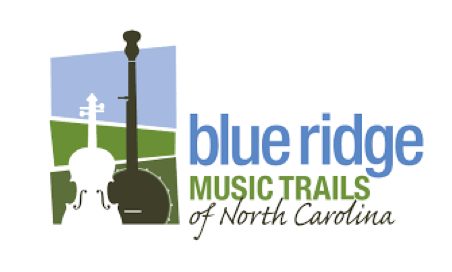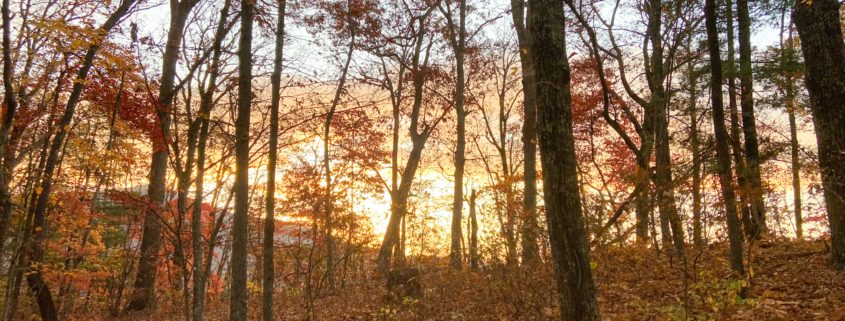Sparking the Fire: BRNHA Celebrates 20th Anniversary
It was over two decades ago when Becky Anderson was walking across the bustling Pack Square in downtown Asheville, only to be approached by the late Gary Everhardt, who, at the time, was the superintendent of the Blue Ridge Parkway.
“He stopped me and said, ‘Hey, there’s this new thing the National Park Service is starting, these National Heritage Areas. And I want you to get us one,’ and then he just walked off,” Anderson recalled with a chuckle.
Back then, Anderson was transitioning from her position as the director of economic development for the Asheville Chamber of Commerce to a new role as the founding director for Handmade in America, and also helping develop projects for The Creative Economy.
And what Anderson and several other key leaders went to work on was the creation and implementation of the Blue Ridge National Heritage Area (BRNHA), which celebrates 20 years in 2023. This new layer of federal designation for the 25 counties that comprise the North Carolina mountains and foothills was added to the already robust Great Smoky Mountains National Park, the Blue Ridge Parkway and the Appalachian Trail.
The BRNHA nonprofit organization preserves, cultivates and promotes the natural and cultural heritage of 25 Western North Carolina counties to benefit current and future generations. With five main areas of focus – agriculture, Cherokee, craft, music and natural heritage – BRNHA is now one of the marquee heritage entities in all of Western North Carolina and greater Southern Appalachia.BRNHA began under the tutelage of AdvantageWest, an economic development organization serving Western NC. In those early years, BRNHA established a major focus on heritage tourism development and promotion for the 25-county region. In 2007, the organization became a fully functioning nonprofit and then started a partnership with the Blue Ridge Parkway at its flagship visitor center in Asheville, providing information to travelers who wanted to explore the outdoors and cultural treasures of Western NC’s small towns and communities.
Another key entity involved in the BRNHA’s development was the North Carolina Arts Council. In the late 1990s into the early 2000s, the NCAC Director of Folklife was Wayne Martin, who was also the executive director of the NCAC from 2012 to 2021. Now the executive director of the North Carolina Arts Foundation, Martin was pivotal in the early days and the continued history of the BRNHA.
“In addition to the ‘Craft Trails,’ we decided to also create the ‘Music Trails’ and ‘Cherokee Trails,’” Martin said. “These trails are a way for people visiting the area to really dig deep and find their way around this incredible cultural place that is Western North Carolina.”
Martin noted that the underlying foundation of the success of the BRNHA and its cultural trails was the sincere connection between the nonprofit organization and the local communities it serves. Input as to what was available, what was needed, and what could potentially be offered, was sought after at every turn in the ongoing process and continued growth of the BRNHA.
“The main thing was the local leadership, that desire among the people in this region to see attention brought to these cultural assets,” Martin said. “We looked at what the communities had already chosen, and there are so many venues of cultural importance — they wanted to make sure these places were preserved and perpetuated, with the [Blue Ridge National] Heritage Area a good vehicle to make that happen.”
Aside from the emphasis on the natural environment, the arts and culture of Western North Carolina, another important corner of the BRNHA is its numerous programs aimed at informing and educating the younger generations. Especially through its grants to communities program, BRNHA has supported efforts like Junior Appalachian Musicians (JAM) which have been enormously successful in keeping mountain music alive in the 21st Century.
“And then, we also have the ‘Fine Tuned’ program, where we’re providing seasoned mentors to emerging musicians, teaming them up and recording the work they’ve created together — we’re mentoring, we’re teaching, we’re capturing their hard work,” Anderson said.
With 20 years now in the rearview mirror, the Blue Ridge National Heritage Area stands tall and proud, and always with new projects on the horizon — one foot in tradition and a storied past, the other in the promise and progress of tomorrow.
“The Museum of the Cherokee Indian was an early supporter of the Blue Ridge National Heritage Area,” stated its Executive Director Shana Bushyhead Condill. “BRNHA’s latest cultural initiative, the Blue Ridge Craft Trails, gives us a new opportunity to amplify the Cherokee craft story in an authentic and innovative way through media coverage, networking, and training. Through intentional partnerships like ours with BRNHA, we center Cherokee voices, showcase our community of artists who are perpetuating and disrupting craft traditions, and share them with a growing audience.”
“The [Blue Ridge National] Heritage Area reminds us of our legacy, our heritage, and our role as citizens in this region,” Anderson said. “[In the last 20 years], we’ve gained respect not only in our region and our state, but nationally — [the BRNHA] got to the heart of who we are, and we keep it authentic.”
Enjoy more of our Down the Road – Bluegrass and Old-Time Music Guide here.








 Marc Mullinax
Marc Mullinax